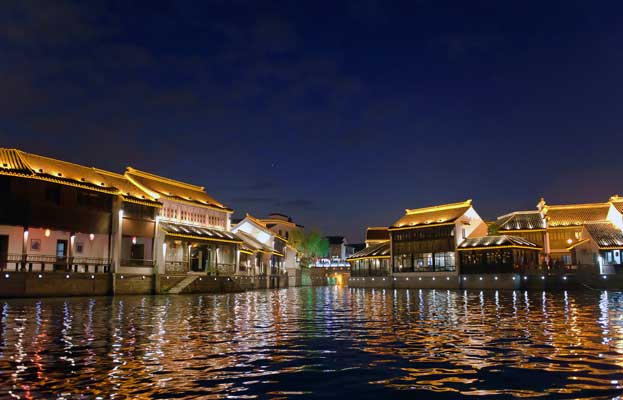China's Grand Canal, the world's longest and oldest artificial waterway, could be added to the UNESCO World Heritage List in 2014 with the help of a new campaign launched by the Shandong provincial government. Starting in Beijing in the north, the 1,747-kilometer-long canal passes through Tianjin as well as the provinces of Hebei, Shandong, Jiangsu and Zhejiang before reaching the city of Hangzhou in the south. The canal's oldest sections can be traced back 2,500 years, and they were linked together in the Sui Dynasty (581-618). It connects China's five major rivers - the Yellow River, the Haihe River, the Huai River, the Yangtze River and the Qiantang River.
Want to read UNESCO Daily News Updates? Click Here!!!
Truth behind Grand Canal

As a major water route for business over the centuries, it is now dotted with numerous ancient buildings and cultural relics, including not only ancient docks and ship locks but also business streets, temples, and former residences of past celebrities along the riverside. To better protect them, the Chinese central government put the canal on the list of key cultural relics under national protection and began to apply for world heritage status for it in 2009.
As an important part of the canal, the waterway in Shandong runs 570 kilometers across five cities, including Zaozhuang, Jining, Tai'an, Liaocheng and Dezhou. According to the Shandong Cultural Relics Bureau, five sections of the canal that lie within the five cities and 61 cultural heritage sites along them have been included on a tentative list of application for World Heritage Status.

"The preservation of the canal is crucial in its application efforts. We'll do our best to protect the rich natural and cultural resources along these sections," said Sun Shiqin, deputy director of the bureau. "Preparations are well under way, including improving the water quality, repairing ancient buildings, archaeological investigation and excavations as well as drafting nomination files," he said.
A feasible protection plan has been unveiled and special offices have been designated to coordinate canal conservation among different departments in the five cities.
A 2 square kilometer ancient town of Taierzhuang surrounded by the waterway in Zaozhuang has been restored. As a transport hub and thriving trading center, the town dates back to 2,000 years ago and was once praised by Emperor Qianlong of the Qing Dynasty (1636-1912) as the "No 1 town under heaven".

It is also the site of the Battle of Taierzhuang, an important victory during the Anti-Japanese War (1937-1945), and some buildings in the town were destroyed during the battle.
Since 2008, a total of 2.7 billion ($424.7million) yuan has been allocated to restoring the town to its previous glory. It now has some classical bridges, an old water transport system, wetland parks, temples, museums, and an architectural complex of a bygone era, which attract more than 1.5 million visitors annually.
An archaeological park project was also launched last June to protect the historic sites of the delicately designed hydraulic works in Wenshang county of Jining. Built in 1411, the hydraulic works, which have high scientific and artistic value, were said to be a wonder in Chinese architectural history.
Additionally, Liaocheng, the once-thriving commercial center in North China, is planning to invest 3.8 billion yuan to restore the city's image as the "Canal Capital of Northern China", by building a Canal Culture Museum of China and repairing the historical relics along the canal.









No comments:
Post a Comment